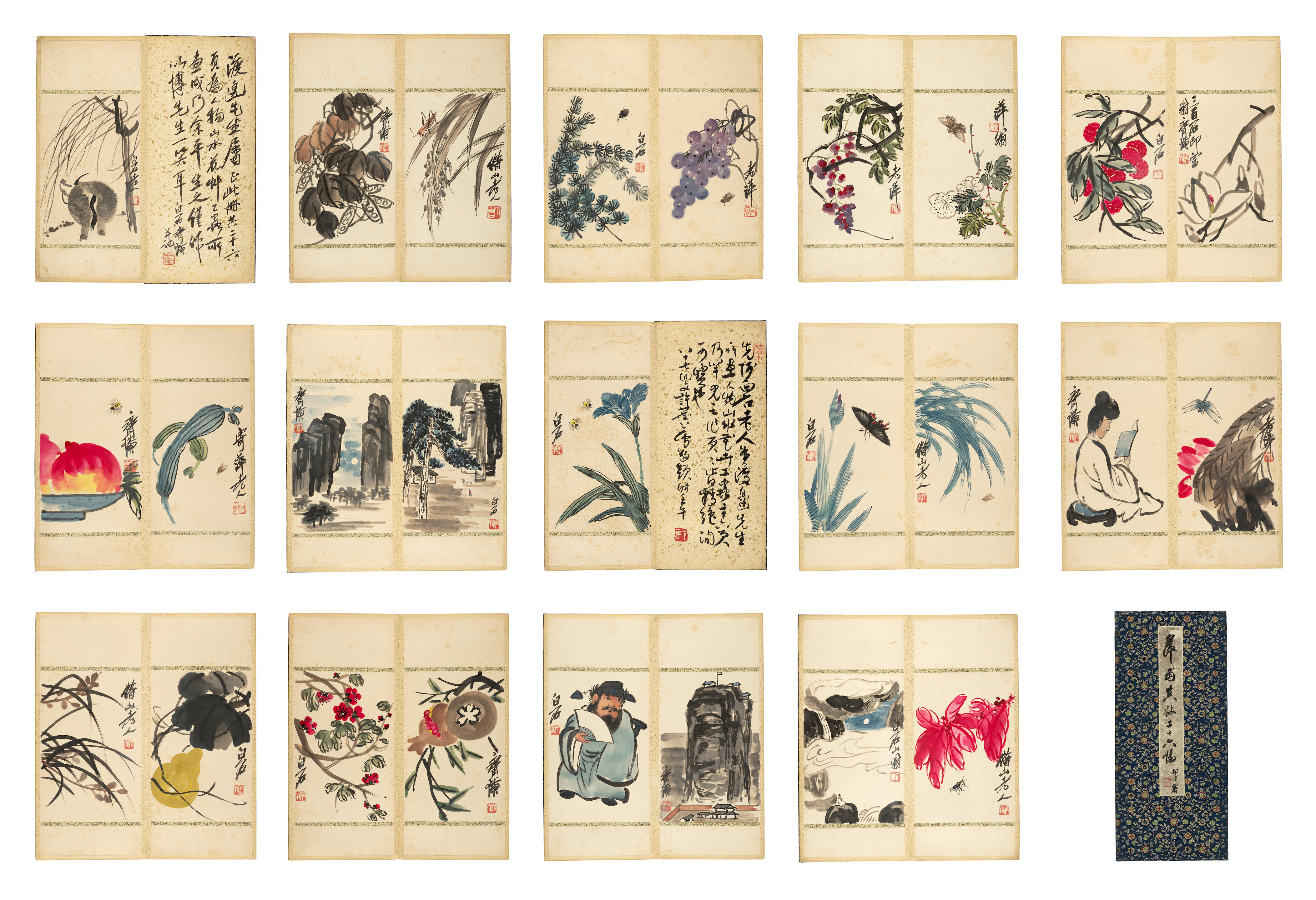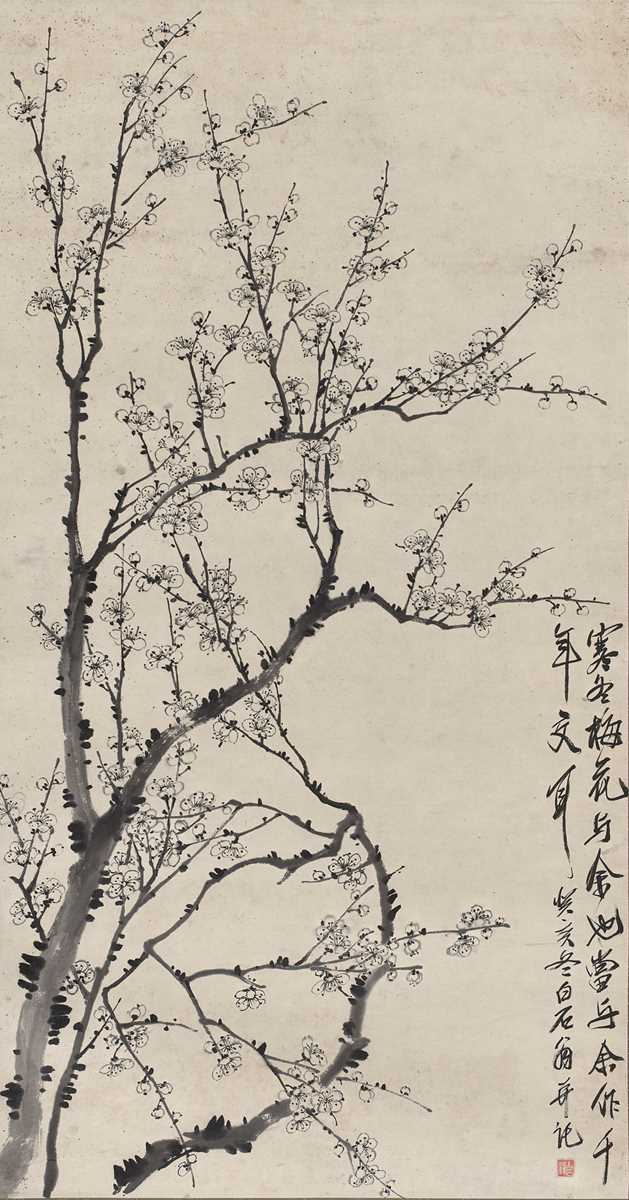Qi Baishi (1864-1957) Pine and Cicada Hanging scroll, ink and light color on paper, inscribed by the artist in seal script Ju gao sheng zi yuan, followed by a signature Jipingtangshang laoren, Qi Baishi with one seal of the artist reading Qi Da. 52 x 13 3/8in (132 x 40cm) Fußnoten 齊白石 居高聲自遠 設色紙本 立軸 Provenance: Far East Fine Arts, San Francisco, California Christie's Hong Kong, 13 January 1986, lot 113 Published: Tsao Jungying, The Paintings of Xugu and Qi Baishi San Francisco, 1993, pp. 295-298 來源: 遠東藝術畫廊,加州舊金山 香港佳士得,1986年1月13日,拍品編號113 出版: 曹仲英,The Paintings of Xugu and Qi Baishi San Francisco, 1993年,295-298頁 The cicada has been a longstanding motif in Chinese art, with its unusually long life cycle evoking ideals of permanence and longevity. Carved jade models of cicada can be traced to the Shang dynasty (1600-1100 b.c.e.), and during the Han dynasty jade cicada-form amulets were placed under the tongue of the deceased as part of the burial ritual. In nature, the cicada lives at the tops of trees, and thus became a symbol of the lofty scholar or high official. In this scroll, Qi Baishi pairs a single cicada with a pine-- also a symbol of longevity due to its evergreen qualities. The composition recalls the verse Cicada 蟬 by the early Tang dynasty poet and calligrapher Yu Shinan (558-638) "居高聲自遠 From its high position, its sound carries far" here written by Qi Baishi in seal script. The powerful brushwork of the poetic inscription and the pine branches contrasts with the delicately rendered cicada, its gossamer wings and anatomical details meticulously captured.
Qi Baishi (1864-1957) Pine and Cicada Hanging scroll, ink and light color on paper, inscribed by the artist in seal script Ju gao sheng zi yuan, followed by a signature Jipingtangshang laoren, Qi Baishi with one seal of the artist reading Qi Da. 52 x 13 3/8in (132 x 40cm) Fußnoten 齊白石 居高聲自遠 設色紙本 立軸 Provenance: Far East Fine Arts, San Francisco, California Christie's Hong Kong, 13 January 1986, lot 113 Published: Tsao Jungying, The Paintings of Xugu and Qi Baishi San Francisco, 1993, pp. 295-298 來源: 遠東藝術畫廊,加州舊金山 香港佳士得,1986年1月13日,拍品編號113 出版: 曹仲英,The Paintings of Xugu and Qi Baishi San Francisco, 1993年,295-298頁 The cicada has been a longstanding motif in Chinese art, with its unusually long life cycle evoking ideals of permanence and longevity. Carved jade models of cicada can be traced to the Shang dynasty (1600-1100 b.c.e.), and during the Han dynasty jade cicada-form amulets were placed under the tongue of the deceased as part of the burial ritual. In nature, the cicada lives at the tops of trees, and thus became a symbol of the lofty scholar or high official. In this scroll, Qi Baishi pairs a single cicada with a pine-- also a symbol of longevity due to its evergreen qualities. The composition recalls the verse Cicada 蟬 by the early Tang dynasty poet and calligrapher Yu Shinan (558-638) "居高聲自遠 From its high position, its sound carries far" here written by Qi Baishi in seal script. The powerful brushwork of the poetic inscription and the pine branches contrasts with the delicately rendered cicada, its gossamer wings and anatomical details meticulously captured.











Testen Sie LotSearch und seine Premium-Features 7 Tage - ohne Kosten!
Lassen Sie sich automatisch über neue Objekte in kommenden Auktionen benachrichtigen.
Suchauftrag anlegen